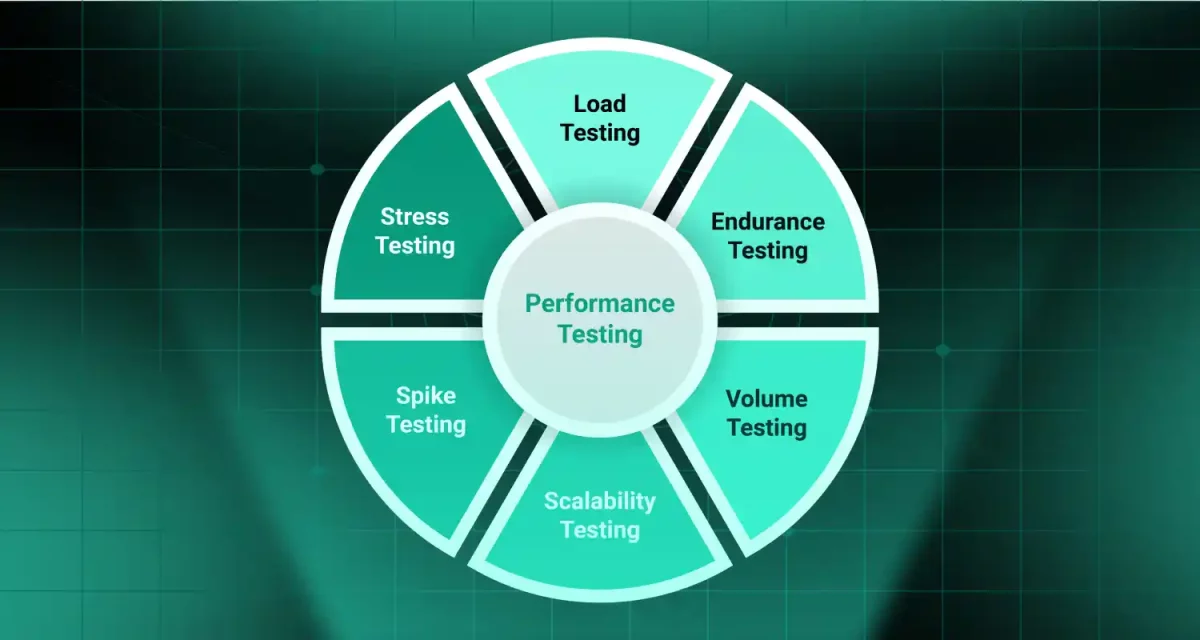
In software development, non-functional testing focuses on evaluating how a system performs under specific conditions rather than what it does. It examines critical quality attributes such as performance, scalability, usability, and security — all of which determine the overall user experience and system reliability.
Unlike functional testing, which verifies individual features and business logic, non-functional testing assesses how well those functions operate. For example, it answers questions like, How fast does the application load under heavy traffic? Is the system secure against potential threats?
This type of testing plays a vital role in ensuring software quality by validating that the application can perform consistently and efficiently across various environments. By identifying performance bottlenecks and system vulnerabilities early, non-functional testing helps deliver robust, scalable, and user-friendly software products.
1. 6 Types of non-functional testing
Non-functional testing encompasses a wide range of test types, each targeting a specific aspect of software quality beyond core functionality. These tests help ensure the system meets performance expectations, security standards, user experience goals, and regulatory requirements.

1.1. Performance testing
Performance testing evaluates how well a system performs under various workloads. It includes:
- Load testing: Measures system behavior under expected user loads to ensure stability and responsiveness.
- Stress testing: Pushes the system beyond its normal limits to identify breaking points and recovery capabilities.
- Volume testing: Assesses performance when handling large volumes of data, ensuring data processing remains efficient and reliable.
Read more >>> Integration Testing in Software Testing | Definition – Types – Process
1.2. Security testing
Security testing focuses on identifying vulnerabilities and ensuring data protection:
- Penetration testing: Simulates real-world attacks to detect potential security breaches.
- Vulnerability scanning: Uses automated tools to uncover known weaknesses in the system’s security posture.
1.3. Usability testing
Usability testing ensures that the software is intuitive and user-friendly:
- User interface evaluation: Reviews the design and layout for clarity, consistency, and accessibility.
- User experience assessment: Analyzes user interactions to identify friction points and enhance satisfaction.
1.4. Scalability testing
Scalability testing determines the system’s ability to grow efficiently:
- Horizontal and vertical scaling: Tests the system’s performance when increasing resources or adding more nodes.
- Elasticity in cloud environments: Verifies the system’s ability to scale automatically in response to demand changes.
1.5. Reliability and availability testing
This type ensures the system remains operational over time with minimal downtime:
- Mean Time Between Failures (MTBF): Measures the average time between system failures.
- Mean Time to Repair (MTTR): Calculates how quickly the system can recover from failures.
Read more >>> What is Unit Testing in Software Testing? Types, Benefits & How It Works
1.6. Compatibility and compliance testing
These tests verify that the software aligns with standards and operates across different environments:
- Cross-platform compatibility: Ensures the application works seamlessly across devices, operating systems, and browsers.
- Regulatory compliance checks: Validates adherence to industry standards and legal requirements (e.g., GDPR, HIPAA).
2. Importance of non-functional testing in software projects

While functional testing confirms that a system works, non-functional testing ensures it works well. Its importance in software projects cannot be overstated, especially in today’s fast-paced, user-driven digital landscape.
- Enhancing user experience: Non-functional tests like usability and performance testing help deliver smooth, responsive, and intuitive applications that meet user expectations.
- Ensuring system stability and performance: By simulating real-world conditions, these tests validate the application’s ability to handle load, maintain uptime, and perform efficiently under stress.
- Mitigating security risks: Security testing helps uncover potential vulnerabilities before they can be exploited, reducing the risk of data breaches and service disruptions.
- Compliance with industry standards: Many industries require strict adherence to regulatory frameworks. Compliance testing ensures the software aligns with legal and technical standards.
- Supporting scalability and future growth: Scalability and reliability testing prepare the system for growth, ensuring it can adapt to increased demand without compromising performance.
3. Best practices for effective non-functional testing

To maximize the value of non-functional testing, it should be integrated thoughtfully into the development lifecycle. The following best practices can help ensure effective and efficient testing:
- Integrating into CI/CD pipelines: Embedding non-functional tests into continuous integration and deployment workflows helps catch issues early and maintain quality at every stage.
- Automating non-functional tests: Automation improves test coverage and speed, especially for performance, load, and security testing.
- Continuous monitoring and feedback: Real-time monitoring tools provide insights into system behavior in production, enabling proactive improvements.
- Collaboration between development and QA teams: A shared understanding of quality goals fosters better test coverage and faster issue resolution.
- Regular updates and maintenance of test cases: As systems evolve, test scenarios must be reviewed and updated to reflect new requirements, environments, and threats.
4. Conclusion
Non-functional testing is essential for building software that goes beyond just working; it ensures performance, security, usability, and reliability. While functional testing checks what a system does, non-functional testing focuses on how well it does it.
By integrating these tests into the development process, teams can deliver better user experiences, meet compliance standards, and prepare for future growth. Adopting this testing isn’t just good practice; it’s a smart investment in long-term software quality.




